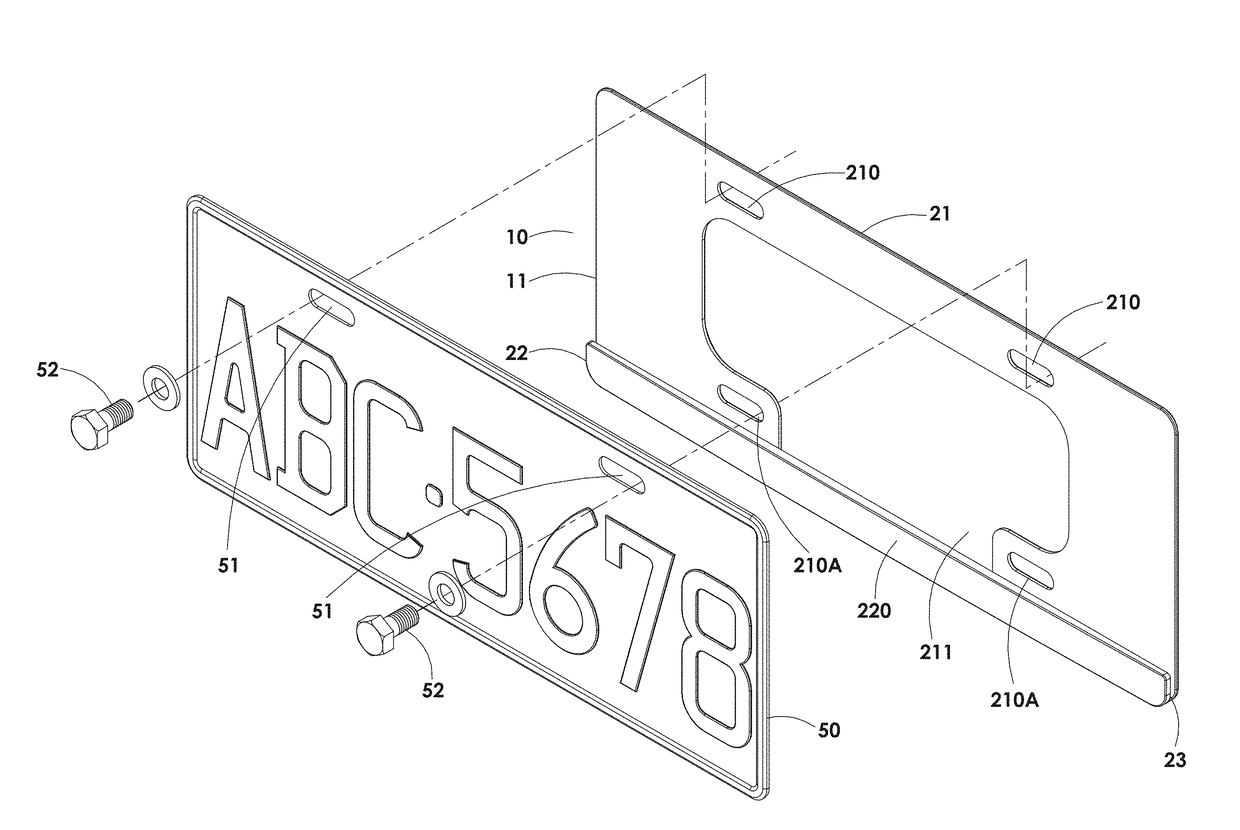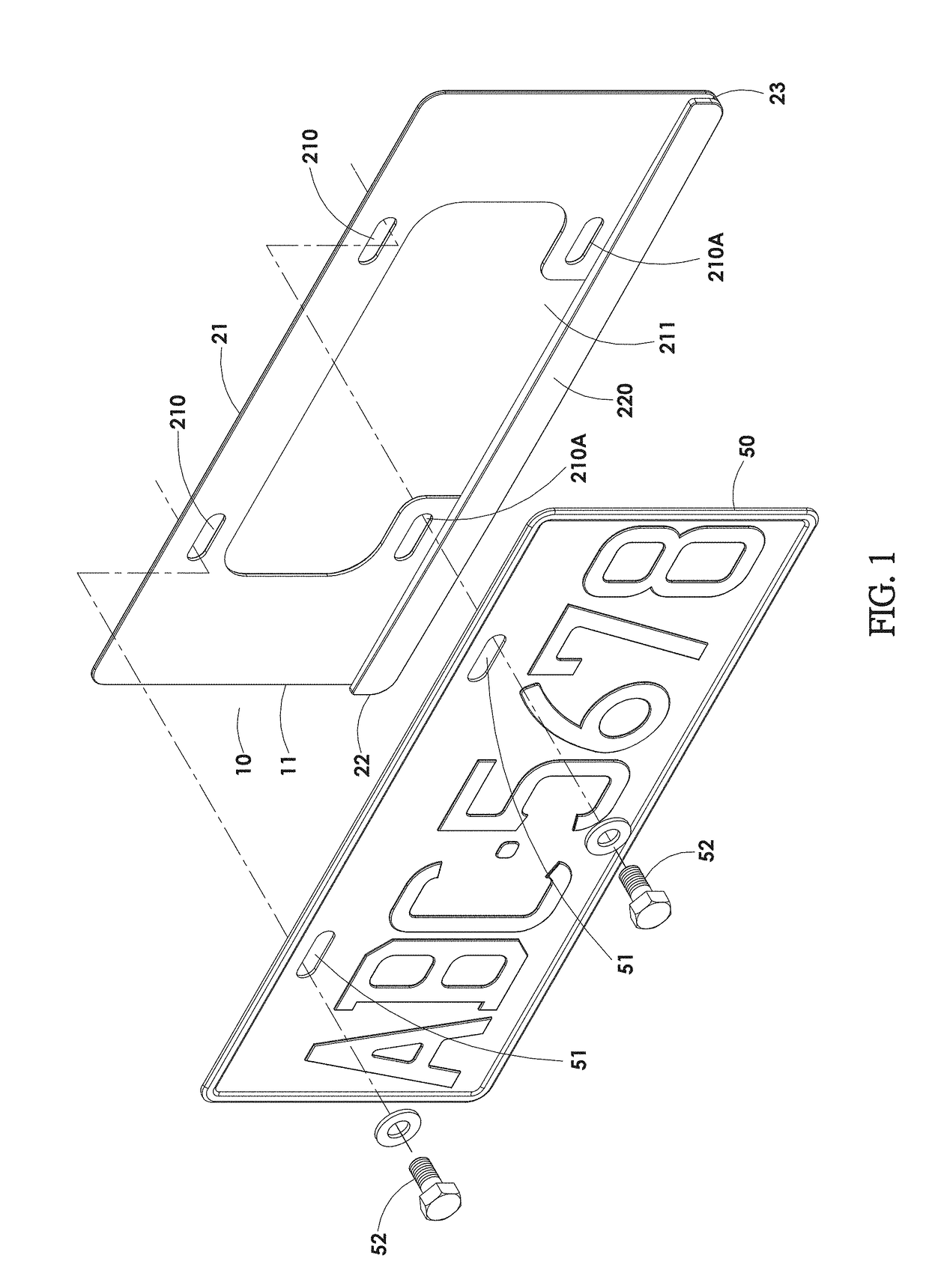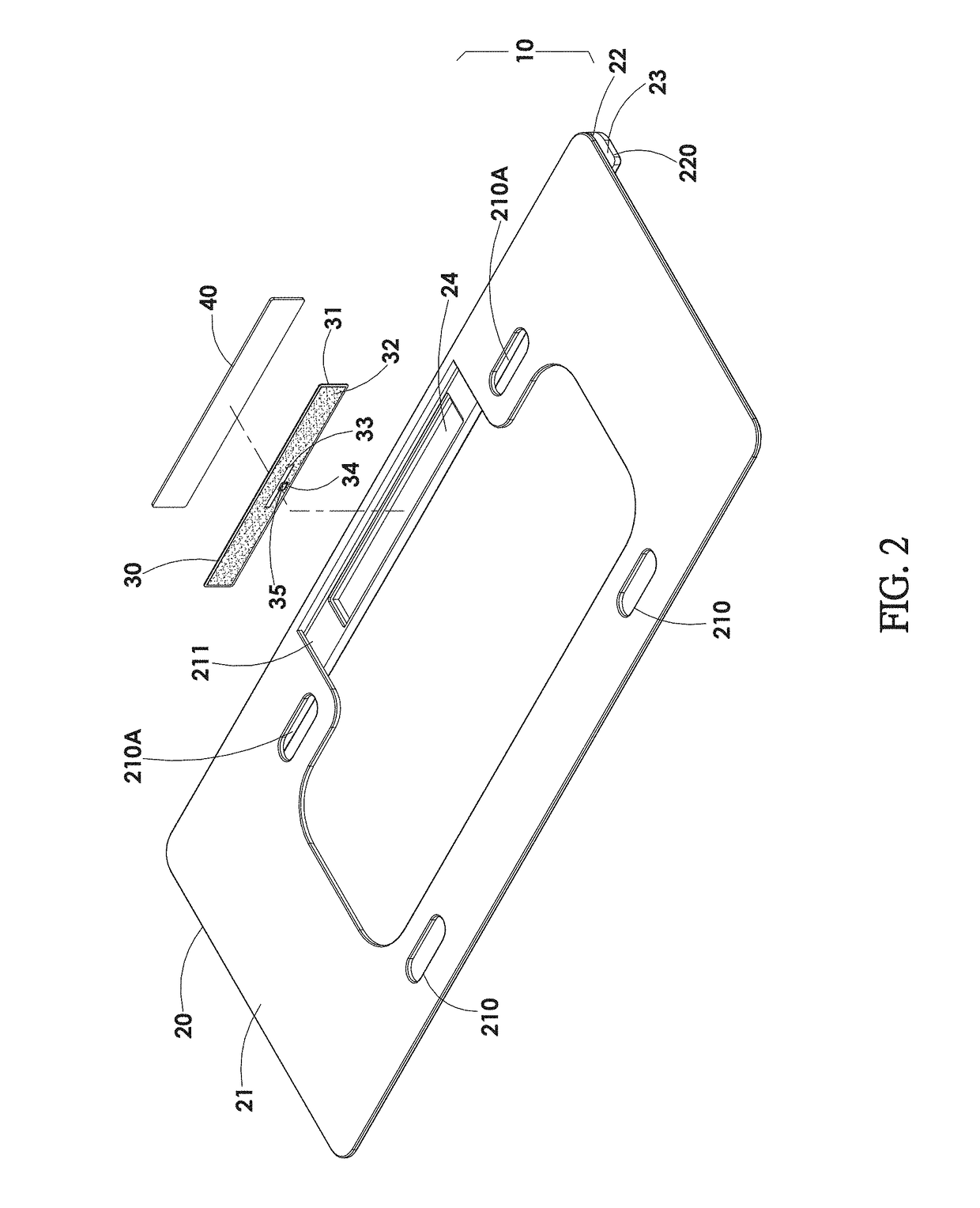License plate radio electronic identifier
a radio electronic and license plate technology, applied in the field of license plate radio electronic identification, can solve the problems of complicated process, electronic tags mounted in the slot may not be able to disengage from the slot, and abnormal signals, and achieve the effects of good reading sensitivity, long distance reading, and cost-effectiveness
- Summary
- Abstract
- Description
- Claims
- Application Information
AI Technical Summary
Benefits of technology
Problems solved by technology
Method used
Image
Examples
Embodiment Construction
[0023]Embodiments of the present invention will now be described, by way of example only, with reference to the accompanying drawings.
[0024]A license plate radio electronic identifier, as shown in FIG. 1 to FIG. 6, comprises an identifier 10 matching a license plate 50 installed to a vehicle (not shown) for radio frequency identification by using a radio frequency reader (not shown). The identifier 10 comprises a plate holder 20, an RFID (radio frequency identification) tag 30, and a sealing sheet 40.
[0025]The plate holder 20 is made of an insulating polymeric (plastic) material by injection molding, and has a plate body 21. The plate body 21 has a pair of perforations 210 corresponding to a pair of mounting holes 51 of the license plate 50. One side of the plate body 21 is formed with a tag setting frame portion 22 having an L-shaped cross section. The tag setting frame portion 22 has an elongate frame 220. A plate receiving groove 23 is formed between the elongate frame 220 and th...
PUM
 Login to View More
Login to View More Abstract
Description
Claims
Application Information
 Login to View More
Login to View More - R&D
- Intellectual Property
- Life Sciences
- Materials
- Tech Scout
- Unparalleled Data Quality
- Higher Quality Content
- 60% Fewer Hallucinations
Browse by: Latest US Patents, China's latest patents, Technical Efficacy Thesaurus, Application Domain, Technology Topic, Popular Technical Reports.
© 2025 PatSnap. All rights reserved.Legal|Privacy policy|Modern Slavery Act Transparency Statement|Sitemap|About US| Contact US: help@patsnap.com



